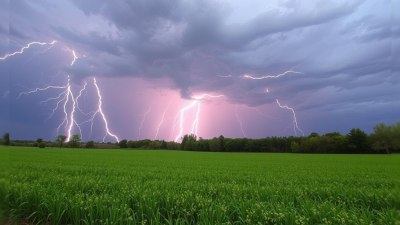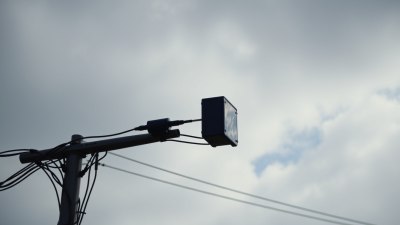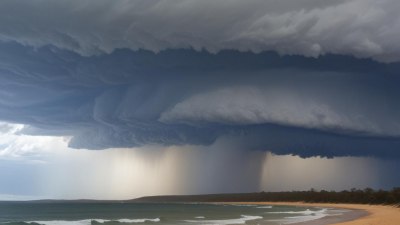Why Some Storms Sound Louder Than They Really Are
Explore why some storms seem louder than they actually are, uncovering the science behind thunder and sound perception.

Image created with Flux Schnell
Storms are among nature's most impressive phenomena, combining powerful winds, rain, and dazzling displays of lightning and thunder. While the visual spectacle of a storm is unmistakable, one of the most fascinating aspects is the sound it produces. Not all storms sound the same, and interestingly, some storms seem louder than others, even if the underlying physical processes are similar. This raises a natural question: why do some storms sound louder than they really are? Understanding this involves exploring the science of sound, atmospheric conditions, and human perception.
Understanding Thunder and Its Origin
Thunder is the audible result of lightning. When a lightning bolt suddenly heats the air in its path, the air rapidly expands, creating a shock wave that manifests as a loud, booming sound we hear as thunder. The intensity of thunder depends primarily on the energy of the lightning bolt and how close the observer is to it. However, this basic explanation doesn't fully account for why some storms sound far more intense to an observer than others.
The frequency and intensity of thunder can vary greatly. A lightning strike close to an observer generates a sharp, loud crack, while one farther away produces a softer rumbling. But even storms with seemingly similar lightning activity can produce drastically different auditory experiences. Several factors beyond just the lightning itself influence the perception of thunder's loudness.
The Role of Atmospheric Conditions
Sound travels through air as a wave of pressure. The way this sound wave moves depends greatly on atmospheric conditions such as temperature, humidity, wind, and air density. These factors can affect both the volume and tonal quality of thunder.
Temperature Gradients: Sound waves bend or refract depending on the temperature of the air layers they travel through. Warmer air is less dense and allows sound to travel faster than cooler air. At night or during temperature inversions—when a warm layer exists above cooler air—sound waves can be trapped and directed back toward the ground. This phenomenon allows thunder to be heard over longer distances and with greater intensity than it would during the day.
Humidity: Moist air transmits sound differently than dry air. Moist air tends to be denser, which can facilitate the propagation of sound waves. During a humid storm, thunder may seem louder or carry farther than it would under dry conditions.
Wind: Wind direction and speed greatly influence how sound reaches an observer. If the wind is blowing from the lightning strike towards the listener, the sound is carried more efficiently and perceived as louder. Conversely, if the wind is blowing away, thunder may seem muffled or quieter.
Terrain and Environmental Impact on Sound
The landscape also plays a significant role in how thunder is heard. Sound waves reflect, absorb, or scatter depending on the surroundings.
Open Areas versus Urban Landscapes: In open fields or flat terrain, sound waves often travel without significant obstruction, allowing thunder to be heard clearly over long distances. In urban environments, buildings and other structures can reflect or absorb sound waves, often increasing echoes and sometimes making thunder seem louder or more dramatic. However, these reflections can also disrupt the direct path of sound, changing its intensity.
Mountains and Valleys: Terrain variations can cause sound to either be amplified or diminished. Valleys can funnel sound waves, concentrating the energy and resulting in louder thunder. Mountains can reflect sound waves back towards valleys or spread them out, creating variable auditory experiences. The topography's role in sound propagation is complex but crucial in why a storm might sound louder in one location than another.
Psychological and Perceptual Factors
Human perception of sound intensity is subjective and influenced by various psychological factors.
Expectation and Anxiety: During a storm, people's emotional state can heighten their awareness and sensitivity to sound. For instance, individuals who fear storms might perceive thunder as louder or more startling than someone who is less anxious.
Surrounding Ambient Noise: In quiet environments, even moderate thunder can seem overwhelming. Conversely, in noisy areas, thunder must be louder to have the same perceived impact.
Hearing Sensitivity: Differences in individual auditory sensitivity affect perception. Age, health, and personal hearing characteristics can make one person perceive thunder as louder or softer than another person would under the same conditions.
The Acoustics of Thunder: Frequency and Duration
Thunder is not a simple sound; it consists of a complex mix of frequencies and durations. The low-frequency rumbles can travel farther but are perceived as less sharp than high-frequency cracks.
Frequency Content: High-frequency sound waves dissipate faster in the atmosphere, which means the crackling component of thunder is usually heard only when close to a lightning strike. The rumbling, lower-frequency sound often lasts longer and can seem louder over distance, particularly if atmospheric conditions favor low-frequency sound propagation.
Duration and Echoes: The length of the thunder sound depends largely on the lightning channel's length and the terrain which can create echoes. Longer duration and multiple echoes can make thunder seem more intense and louder, as the brain integrates these repeated sounds into a more powerful auditory experience.
Distance and the Speed of Sound
The distance from the lightning strike to the observer influences thunder's perceived loudness and timing. Since light travels at roughly 300,000 kilometers per second, lightning is seen almost instantly, while sound waves travel at about 343 meters per second (at sea level and 20°C).
This difference means there is always a delay between seeing lightning and hearing thunder, known as the lightning-thunder delay. Close lightning can produce spectacularly loud and sharp thunder, while distant lightning appears to produce only faint rumbling. Intriguingly, under certain conditions, storm sounds can be distorted, making distant thunder seem closer or louder than expected.
Why Thunder Can Seem Louder Than The Storm Itself
In some cases, thunder can appear significantly louder than the visible and tactile effects of the storm—such as rain or wind—might suggest. This occurs when sound propagates efficiently due to atmospheric conditions and terrain, creating a sound bubble that envelopes an area even while the storm may seem distant or mild in other respects.
Additionally, the contrast between silence before a storm and the sudden explosive sound of thunder can create a stark auditory impression. This contrast amplifies the subjective loudness perception, making the sound feel oddly louder compared to other storm elements.
In certain environments, sound focusing can occur due to atmospheric ducts where sound waves are trapped between layers of air with different temperatures or densities. These ducts can channel thunder over unusually large distances and concentrate sound energy, making distant storms seem extraordinarily loud and out of scale with their visible size.
Unique Phenomena Affecting Thunder's Loudness
Several rare meteorological and acoustic phenomena can enhance the loudness of thunder:
Multiple Lightning Strikes: When several lightning bolts strike in close succession or in overlapping paths, they can produce overlapping thunder sounds which sum up to produce a much louder noise.
Ground Reflections and Resonance: Certain surfaces can reflect and amplify sound waves. Wet ground or bodies of water can create resonance, intensifying thunder's volume locally.
Electrical and Magnetic Effects: While not fully proven, some theories suggest that storm-related electrical and magnetic fields might influence the propagation of sound waves, although these effects are subtle and not well understood.
Technological Applications and Monitoring
The understanding of how and why thunder sounds vary is not only academically interesting but practically important. Meteorologists use acoustic sensors to detect and analyze thunderstorms. These sensors must account for environmental effects on sound to estimate lightning location and storm severity accurately.
Advanced storm detection systems combine various data sources, including sound, electrical sensing, and visual observations, to provide warnings and enhance public safety. A better grasp of thunder's acoustics aids in designing more sensitive and reliable equipment.
The apparent loudness of thunder during storms is influenced by a rich interplay of natural factors. Atmospheric conditions, such as temperature gradients, humidity, and wind, affect how sound waves travel. The surrounding environment, including terrain and urban structures, can reflect and amplify or diminish thunder sounds. Human perception, shaped by psychological factors and individual hearing sensitivities, also plays a vital role.
Furthermore, thunder's complex acoustic nature—consisting of varying frequencies, durations, and echoes—adds layers to how it is heard and interpreted. Understanding these factors highlights the fascinating complexity behind the seemingly simple act of hearing a storm and explains why some storms sound louder than they really are.











